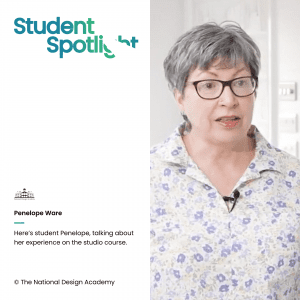
Student Spotlight: Penelope Ware
Our Diploma in Professional Soft Furnishings & Curtain Making is the ideal course if you want to design your own projects, help your friends and family
As a not-for-profit foundation, we are so confident in the price of our Diploma’s that if you can find the same level of education for less, we will match it!

No previous qualifications required, just an interest & enthusiasm for soft furnishings for interior design.

10 days In-Studio + Up to 10 weeks of home study projects

Week 1: 20th - 24th May
Week 2: 1st - 5th July

No exams — Tutor assessment only, portfolio moderation by AIM Qualifications.
With these skills you will be able to tackle your own projects more professionally, start your own business or enter the curtains and soft furnishing industry with the practical knowledge required to work with your clients.You’ll also learn how to establish industry contacts, where to source material, samples, fittings and accessories, everything you need to start building a professional design community with your peers.
Whilst receiving hands-on advice directly from our highly experienced NDA Tutors, the In-studio course brings together a fantastic mix of students, helping to create an exciting, friendly and dynamic class with the chance to share ideas with fellow up and coming designers.
The Diploma course consists of a first week (5 days) in-studio followed by 5 weeks of home study projects, then a second week (5 days) in-studio with an additional 5 weeks to complete any outstanding projects for submission to complete your course.
We are passionate about delivering high-quality courses to our students, and as we believe that students learn faster in smaller groups, we cap the student numbers attending each studio course.
Nottingham, UK
May to July Course
September to November Course
You will study ten dedicated units during this Professional Diploma
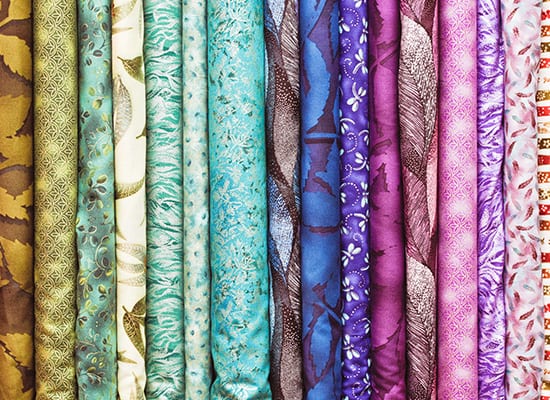
This unit introduces you to fabrics and linings and how to choose appropriate fabrics for curtain or soft furnishings designs. It also sparks your creativity by working with colour schemes, presentation boards and understanding the way colour affects your designs. This unit will underpin all your future projects. This unit also includes:

This unit will show you how to measure windows and how to design window treatments to enhance different styles of window. You will also learn how to estimate fabric quantities for curtains and soft furnishings. These are essential skills you will need before moving onto the sewing & construction methods for curtains and soft furnishings. This unit also includes:
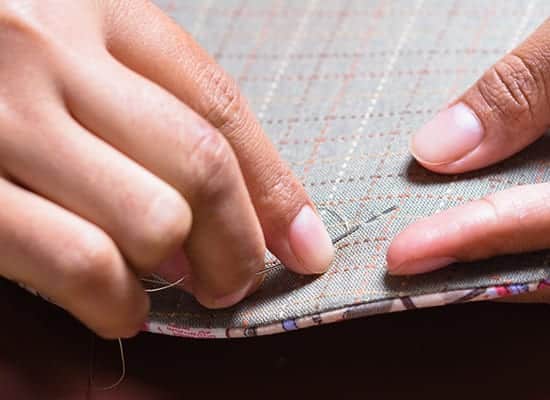
In this unit you will learn how to apply a range of techniques to ensure a professional finish is given to all types of window treatments and soft furnishings. This covers hand stitching, hand covered weights, mitred corners and joining multiple curtain lengths. This unit also includes:
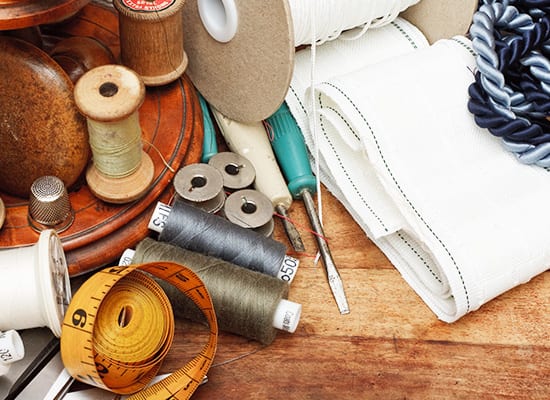
This unit will give you a thorough understanding of the construction of various curtain designs including lining, interlining and decorative trim options with pencil pleat headings. You will apply all the techniques learnt to produce sample sized curtains and know how to transfer these skills to full sized curtain projects. This unit also includes:
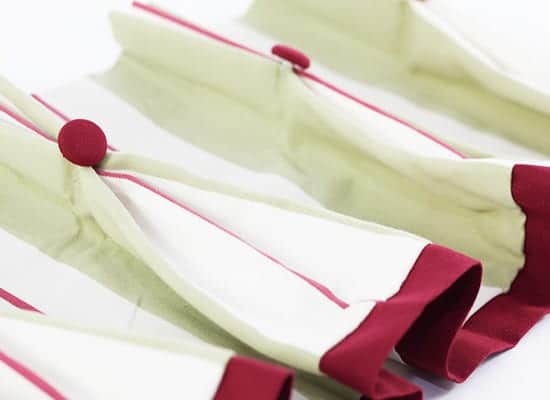
This unit will take curtain making to the next level and you will learn how to apply a range of hand-made headings which can be used for both curtains and valances. You will construct valances with different types of hems and a range of hand-made headings.This unit also includes:
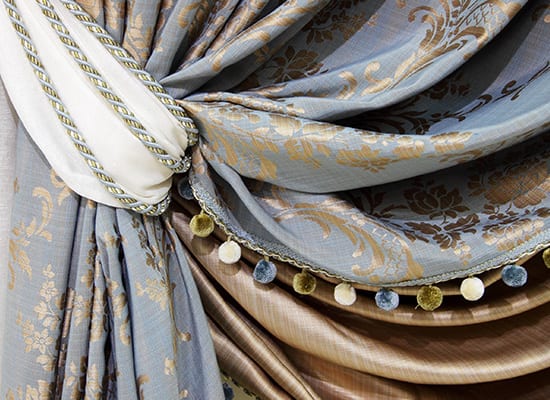
This Unit covers a specific set of sewing skills including how to make piping and how to insert zips. You will apply these skills to construct a piped, crescent shaped tie back plus a piped cushion with a concealed zip. This unit also includes:
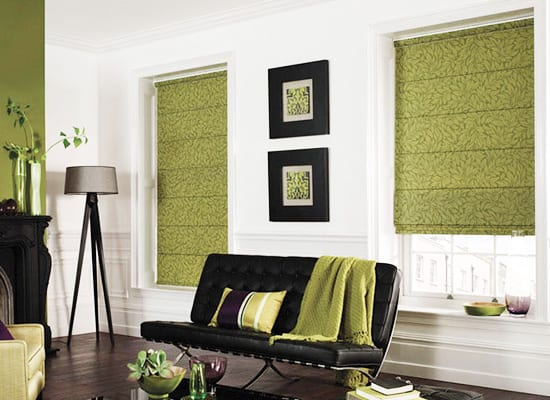
This unit will cover all the skills required to produce a sample sized, lined Roman blind to a professional standard. Learn how to accurately divide the blind into equal sections so the folds are flat with the rod pockets constructed within the lining and no stitches visible from the front side. This unit also includes:
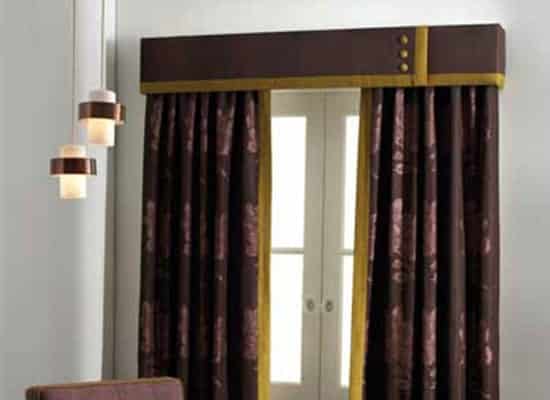
This Unit covers all the sewing skills and techniques required to produce a sample sized, professional padded pelmet. You will also learn how to assess the pelmet proportions to suit the window and the chosen style of treatment. This unit also includes:
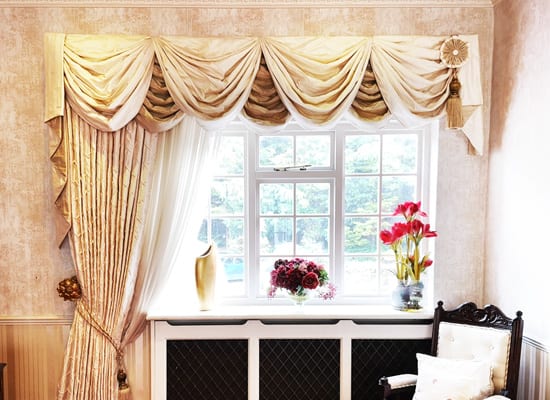
In this unit you will learn how to design swags and tails in proportion to window sizes. You will construct a sample sized, lined swag and tail, and learn the formula for producing swag templates. This unit also includes:
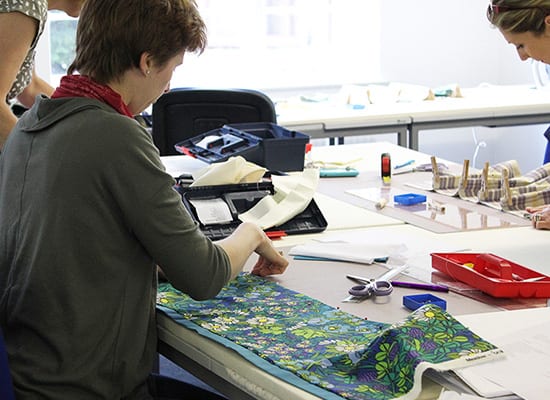
The final unit of the course looks specifically at setting up a professional work room and includes everything you need to know when starting a curtain making & soft furnishings business.This unit also includes:

This unit introduces you to fabrics and linings and how to choose appropriate fabrics for curtain or soft furnishings designs. It also sparks your creativity by working with colour schemes, presentation boards and understanding the way colour affects your designs. This unit will underpin all your future projects. This unit also includes:

This unit will show you how to measure windows and how to design window treatments to enhance different styles of window. You will also learn how to estimate fabric quantities for curtains and soft furnishings. These are essential skills you will need before moving onto the sewing & construction methods for curtains and soft furnishings. This unit also includes:

In this unit you will learn how to apply a range of techniques to ensure a professional finish is given to all types of window treatments and soft furnishings. This covers hand stitching, hand covered weights, mitred corners and joining multiple curtain lengths. This unit also includes:

This unit will give you a thorough understanding of the construction of various curtain designs including lining, interlining and decorative trim options with pencil pleat headings. You will apply all the techniques learnt to produce sample sized curtains and know how to transfer these skills to full sized curtain projects. This unit also includes:

This unit will take curtain making to the next level and you will learn how to apply a range of hand-made headings which can be used for both curtains and valances. You will construct valances with different types of hems and a range of hand-made headings.This unit also includes:

This Unit covers a specific set of sewing skills including how to make piping and how to insert zips. You will apply these skills to construct a piped, crescent shaped tie back plus a piped cushion with a concealed zip. This unit also includes:

This unit will cover all the skills required to produce a sample sized, lined Roman blind to a professional standard. Learn how to accurately divide the blind into equal sections so the folds are flat with the rod pockets constructed within the lining and no stitches visible from the front side. This unit also includes:

This Unit covers all the sewing skills and techniques required to produce a sample sized, professional padded pelmet. You will also learn how to assess the pelmet proportions to suit the window and the chosen style of treatment. This unit also includes:

In this unit you will learn how to design swags and tails in proportion to window sizes. You will construct a sample sized, lined swag and tail, and learn the formula for producing swag templates. This unit also includes:

The final unit of the course looks specifically at setting up a professional work room and includes everything you need to know when starting a curtain making & soft furnishings business.This unit also includes:
Images of our talented Diploma students hard at work in our In-Studio sessions
UK residents pay approximately 50% course fees and funding from the UK government will pay the rest.
All NDA Professional Diplomas are accredited by AIM Qualifications. NDA is the only design school to be able to offer funding & student loans because our Diplomas are fully accredited.
There are two ways for UK students to pay for their In-Studio Diploma:
There are two ways for International students to pay for their In-Studio Diploma:
In-Studio Study – All required equipment and resources will be provided during your time In-Studio, however you will need access to a laptop computer to view course material and the online learning resources.
Home Study – Alongside a computer and an internet connection, there is also essential and recommended equipment required to complete your NDA Course, all available through the NDA Art Shop at student prices! Throughout home study, you have full online access to our resources and your Personal Tutor.
The Diploma in Professional Soft Furnishings & Curtain Making is designed to help you start your own Soft Furnishings Workroom and Design Service. In the same way you have studied the Diploma course, you can work flexibly for your clients around your family commitments and gradually expand your business. You could also study the Professional Interior Design Diploma to offer additional design services to your clients.
Successful completion of your NDA Diploma provides a guaranteed place on one of our online BA (Hons) degrees with a generous Progression Scholarship. Degrees are validated by De Montfort University (DMU).
For those who wish to continue their study at an on campus university, all NDA Professional Diplomas carry a UCAS tariff point value. You can top up any existing UCAS points you may have with points from an NDA Diploma.
Diploma in Professional Soft Furnishings & Curtain Making = 32 UCAS tariff points.

Our Diploma in Professional Soft Furnishings & Curtain Making is the ideal course if you want to design your own projects, help your friends and family
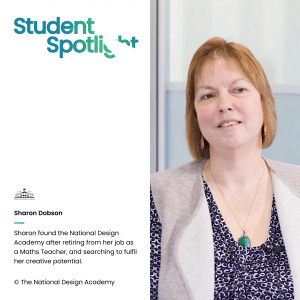
“For me, the beauty of how the course is put together, is you can see your own personal journey” During a recent in-studio course at the

Our Spotlight for August is looking at the work of Caroline Wright who is currently enrolled onto the National Design Academy Professional Curtain Making Diploma. ABOUT
Hear what past and present students have to say about studying In-Studio at the NDA
Our admissions team will be happy to discuss your options.
COPYRIGHT © NATIONAL DESIGN ACADEMY